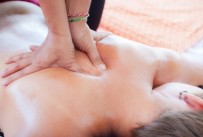Don’t depend on massage

Don’t depend on massage
Written by: Paul Kochoa, PT, DPT, OCS, CKTP, CGFI
Massage may not be the answer to your pain problem. I had a patient come in the other day asking for a massage to alleviate her pain. She had a muscular strain that limited her ability to workout. I proceeded to tell her that massage may be an immediate relief but wouldn’t help her out in the long run.
Functional deficits and pain can originate from a movement dysfunction. There are many types of massage techniques that are practiced by different medical and health professionals. It is a great manual technique to address soft tissue and can help other aspects of the patient such as emotional or psychological components to pain. A massage can mobilize soft tissue, release endogenous opiates (our body’s own natural pain-killer), and can realign connective tissue, but it can fall short in restoring normal movement and function.
Physiotherapy is basically the treatment of movement dysfunctions. When a patient has problems moving, whether it be just getting out of bed or running a marathon, physiotherapist are the movement experts. We analyze and facilitate proper movement patterns so that a patient can return to regular daily activities without pain or participate in high level sports successfully without injury.
Massage, or soft tissue mobilization, can be an adjunct to our treatment protocol, but it never is the means to the end. Once pain can be controlled and mobility can be restored, that’s just half the battle. Stabilization and exercise is needed to promote efficient movement patterns and prevent recurrence of injury. I’ve always told my patients that massage can feel really good right now, but it’s just like putting a band-aid on a gunshot wound, it doesn’t solve the long term problems.
One must find the source of the pain. Tight muscle? Muscle spasm? Sure, let’s use some soft tissue mobilization to break up that spasm and relax that muscle. But how did you get it? How did the muscle become tight? There must be some postural or movement dysfunction that caused the muscle problem and pain in the first place. Finding the root cause is part of the scope of practice for a physiotherapist.
A thorough physical examination can reveal the root cause of the problem, and as mentioned in my other posts, the problem of one body part may be due to a dysfunction in another part. The key is to find the cause and address it, not just alleviate the symptoms alone.
If you would like more information, please call Professional Physical Therapy and Training at 973-270-7417. Our offices are located within the YMCA locations in Madison and Summit, NJ. You do not need to be a member of the YMCA to visit with us.
Image courtesy of samuiblue / FreeDigitalPhotos.net